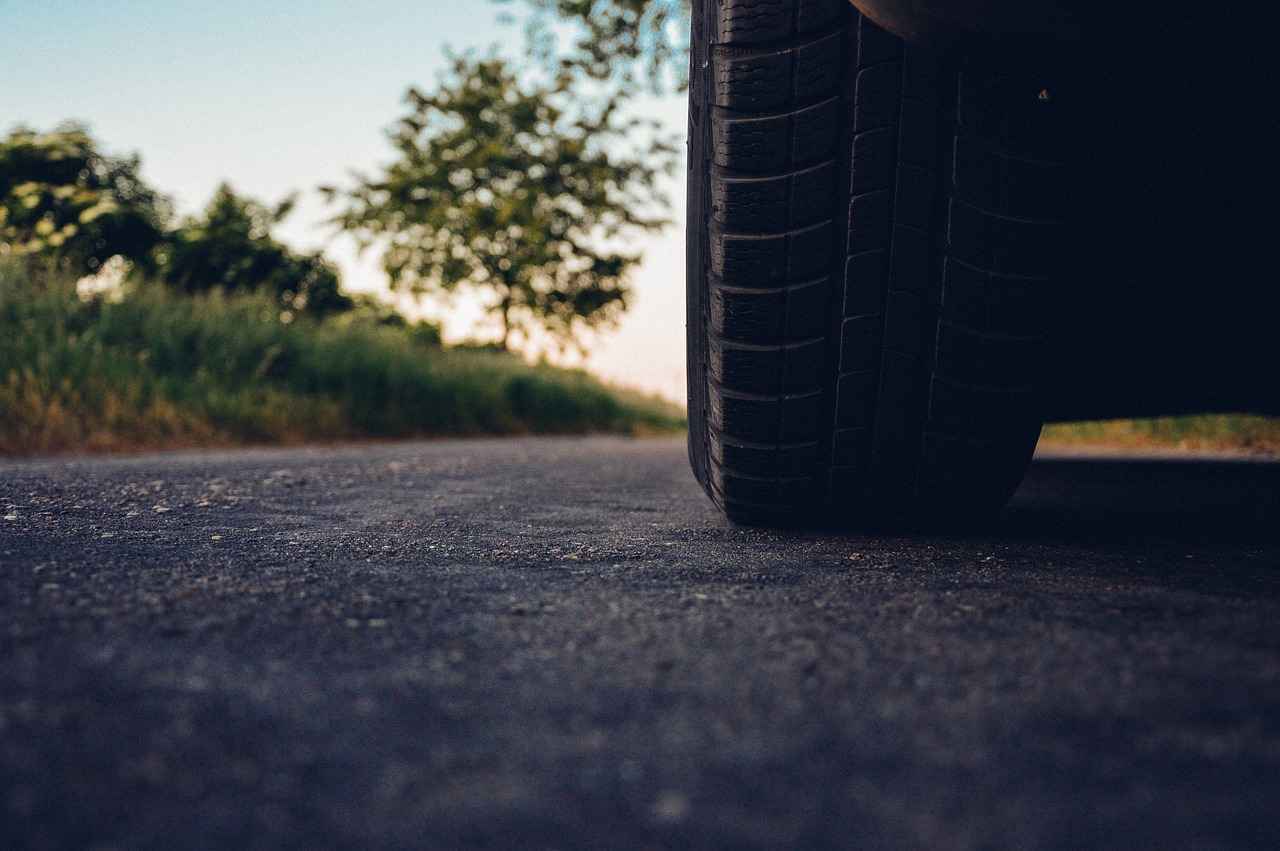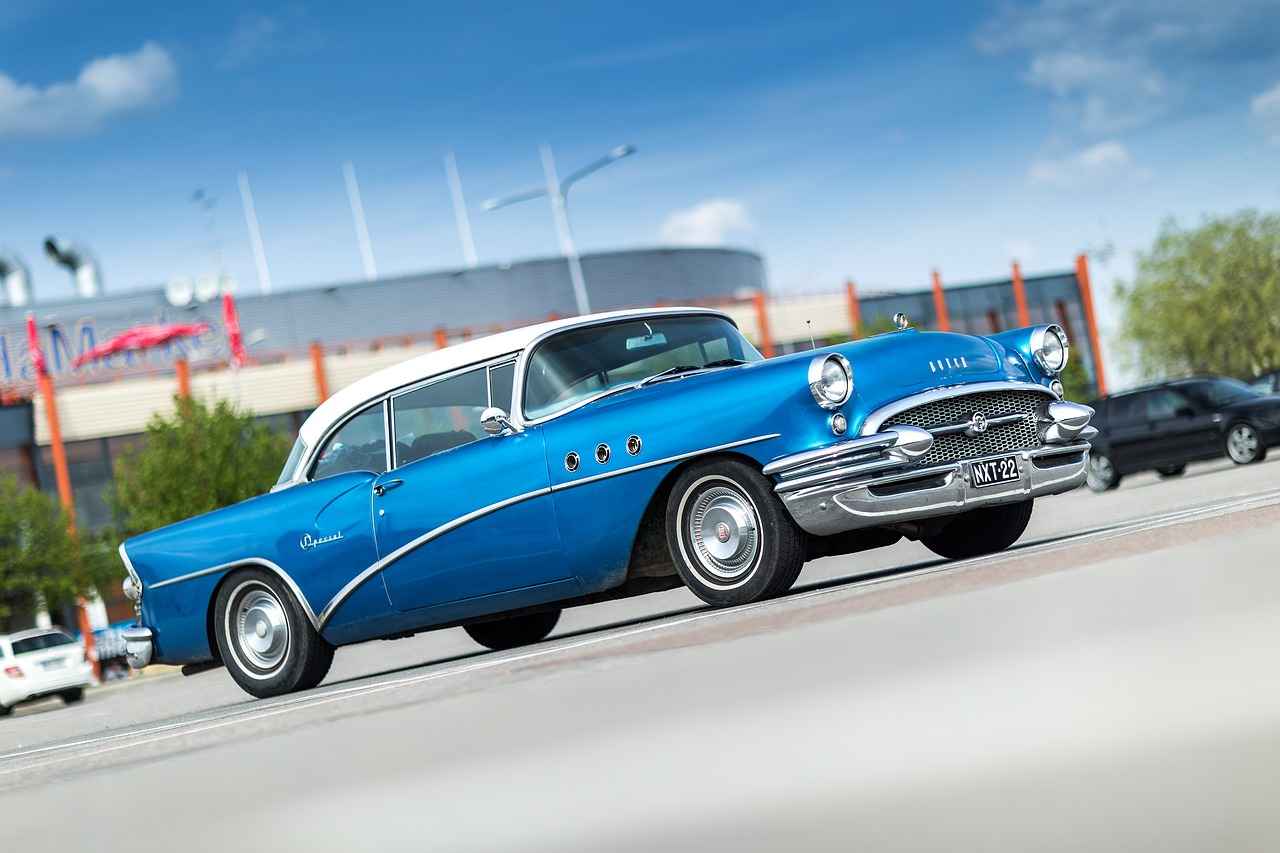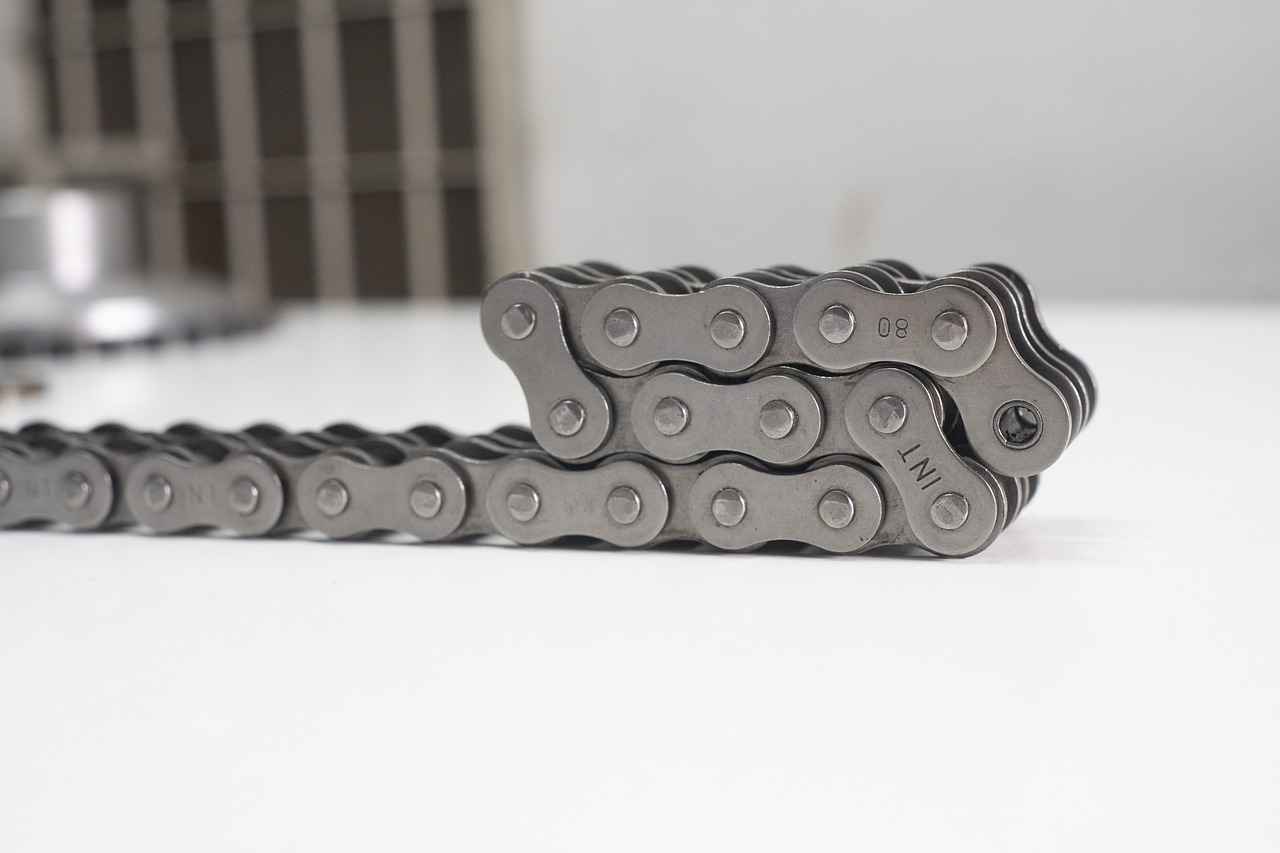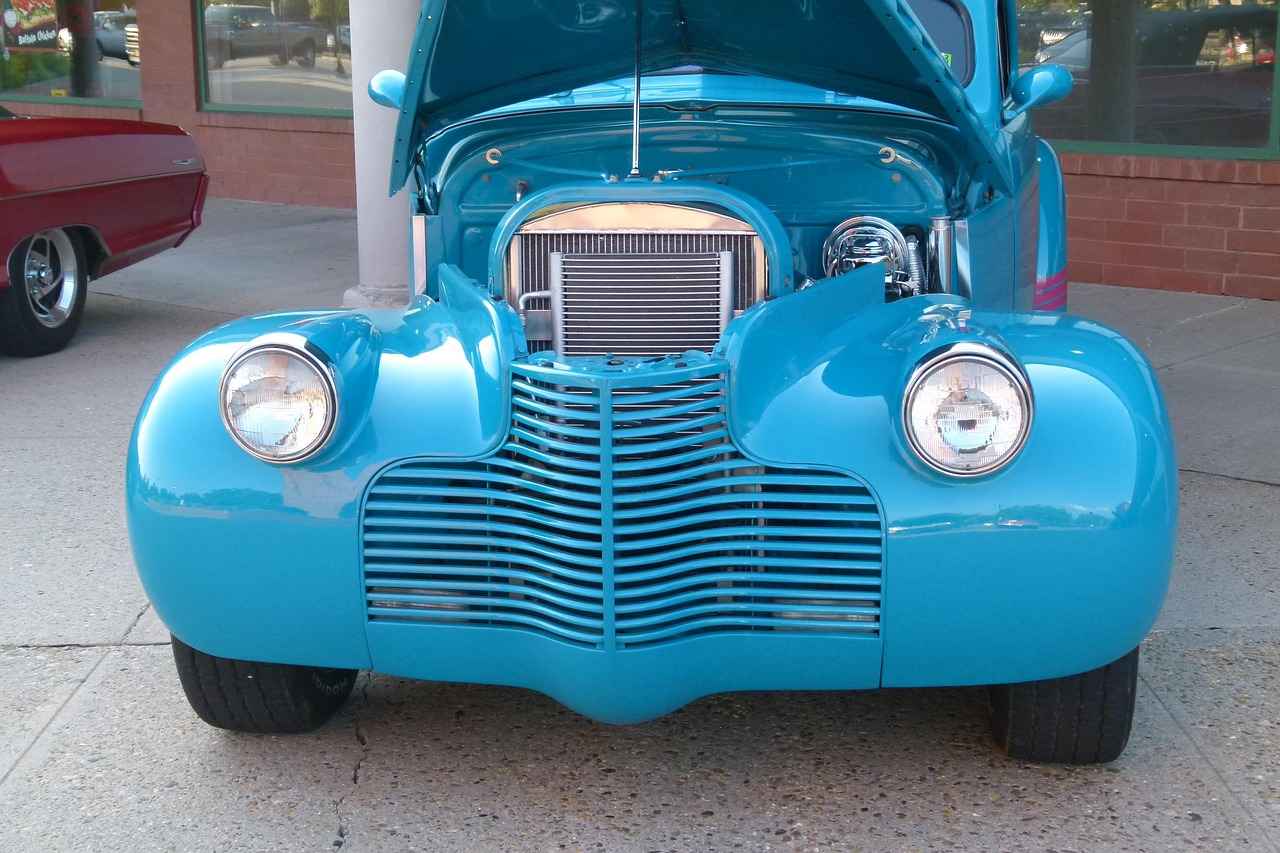This article provides a detailed exploration of the paint requirements for car painting, including factors influencing paint quantity, estimation methods, and tips for a successful project.
Understanding the variables that affect paint quantity is crucial for anyone considering a car painting project. Several factors play a significant role in determining how much paint you will need:
- Car Size: Larger vehicles will naturally require more paint than smaller ones.
- Type of Paint: Different paint types have varying coverage rates, impacting overall consumption.
- Number of Coats: The more coats you apply, the more paint you will need.
Estimating paint needs varies by car size. Knowing your car’s dimensions is essential for accurate calculations:
- Small Cars: For compact cars, approximately 1 to 2 quarts of paint are usually sufficient.
- Medium Cars: Medium-sized cars generally require 2 to 3 quarts.
- Large Vehicles: Larger vehicles, such as SUVs or trucks, may need 3 to 5 quarts to achieve full coverage.
The type of paint you choose can greatly affect the amount needed. Here are two common types:
- Acrylic Paint: Typically offers better coverage and durability, requiring less quantity.
- Enamel Paint: May need more layers, thus increasing the overall paint needed.
Calculating the amount of paint needed involves a systematic approach:
- Measuring Your Vehicle: Measure the surface area of your car, including height, width, and length.
- Understanding Paint Coverage: One quart of paint typically covers about 100 square feet. This knowledge helps you determine how many quarts you’ll need.
Applying paint effectively can minimize waste and ensure a quality finish:
- Preparing the Surface: Proper preparation is crucial for paint adhesion. Cleaning, sanding, and priming your vehicle will ensure the paint adheres properly.
- Applying Coats: Generally, two to three coats are recommended for optimal coverage. Applying thin layers helps avoid runs and drips.
By following these guidelines, you can achieve a professional-looking paint job while minimizing waste. Remember to consider all factors, from the size of your vehicle to the type of paint you choose, to ensure your project is successful.

What Factors Influence the Amount of Paint Needed?
When embarking on the journey of painting a car, understanding the variables that influence paint quantity is essential for a successful project. Not all cars are created equal, and various factors can significantly affect how much paint you will need. Below, we delve into the most critical aspects that determine your paint requirements.
- Car Size: The size of your vehicle plays a pivotal role in determining the amount of paint required. Compact cars will need much less paint compared to larger vehicles, such as SUVs or trucks.
- Type of Paint: Different types of paint have varying coverage rates. For example, acrylic paints generally provide better coverage than enamel paints, which may require multiple coats.
- Number of Coats: The number of coats you plan to apply can greatly impact your paint needs. More coats mean more paint, so it’s essential to consider how many layers you intend to use.
- Surface Condition: The condition of the car’s surface can also affect paint consumption. A well-prepared surface may require less paint than a rough or damaged one, which may absorb more paint.
- Application Method: The method you choose for applying the paint (spray gun, brush, or roller) can influence how much paint is actually used. Spray guns tend to produce a more even coat, potentially reducing waste.
Understanding these factors will help you make informed decisions and avoid unnecessary expenses.
Estimating the amount of paint needed based on car size is crucial. Smaller vehicles, such as compact cars, typically require around 1 to 2 quarts of paint. This amount is usually sufficient for a thorough base coat and allows for some touch-ups if necessary.
On the other hand, medium-sized cars may require about 2 to 3 quarts, while larger vehicles, such as SUVs and trucks, can demand anywhere from 3 to 5 quarts to ensure full coverage. Knowing your car’s dimensions will aid in making accurate calculations.
The choice of paint type can significantly affect the amount required. Acrylic paints are often preferred for their durability and superior coverage, potentially requiring less quantity compared to enamel paints. Enamel paints may necessitate additional layers, thus increasing the overall paint needed.
Additionally, the finish you choose—whether glossy or matte—can influence the amount of paint necessary. Glossy finishes tend to require more coats for an even appearance, while matte finishes may provide better coverage with fewer layers.
To accurately calculate how much paint you’ll need, follow these steps:
- Measure Your Vehicle: Start by measuring the height, width, and length of your car to determine the total surface area that requires painting.
- Understand Paint Coverage: Generally, one quart of paint covers approximately 100 square feet. Use this figure to estimate how many quarts you’ll need based on your car’s surface area.
By taking these steps, you can ensure that you purchase the right amount of paint for your project, minimizing waste and maximizing efficiency.
To achieve the best results while conserving paint, consider the following best practices:
- Surface Preparation: Properly preparing the surface is vital for paint adhesion. Clean, sand, and prime your vehicle to ensure the paint adheres well, reducing the need for extra coats.
- Applying Coats: It’s generally recommended to apply two to three coats for optimal coverage. Applying thin layers can help avoid runs and drips, resulting in a smoother finish.
By adhering to these guidelines and understanding the factors that influence paint quantity, you can effectively plan your car painting project and achieve a professional-looking finish.

How to Estimate Paint Requirements by Car Size?
When it comes to painting a car, one of the first considerations is how much paint you will need. The amount of paint required can vary significantly based on the size of the vehicle. Understanding these differences is crucial for anyone looking to undertake a car painting project, whether for personal satisfaction or professional purposes.
Estimating paint needs varies by car size. Smaller cars typically require less paint, while larger vehicles may need significantly more. Knowing your car’s dimensions is essential for accurate calculations. Here’s a breakdown of what to expect based on different car sizes:
- Small Cars: For compact cars, approximately 1 to 2 quarts of paint are usually sufficient. This amount allows for a thorough base coat and several touch-ups if needed.
- Medium Cars: Medium-sized cars generally require about 2 to 3 quarts of paint. This range accommodates the larger surface area compared to smaller vehicles.
- Large Cars: Larger vehicles, such as SUVs or trucks, may need 3 to 5 quarts of paint to achieve full coverage. This is due to their extensive surface areas and intricate designs.
To ensure an accurate estimate, it is vital to measure your vehicle’s dimensions. This involves assessing the height, width, and length, which helps in determining the total area to be painted. Generally, one quart of paint covers about 100 square feet. Knowing this can help you calculate how many quarts you’ll need based on your car’s surface area.
One quart of paint typically covers around 100 square feet under optimal conditions. However, various factors can affect this coverage:
- Paint Type: Different types of paint have varying coverage rates. For example, acrylic paints usually offer better coverage than enamel paints.
- Surface Condition: A well-prepared surface will require less paint compared to a rough or uneven surface, which may absorb more paint.
- Application Method: The method of application—spraying, rolling, or brushing—can also impact how much paint is used.
To accurately calculate your paint needs, follow these best practices:
- Measure Your Vehicle: Use a tape measure to determine the height, width, and length of your car. This will help you estimate the total surface area.
- Determine Paint Coverage: Check the specifications on your paint can for coverage rates, and adjust your calculations accordingly.
- Account for Multiple Coats: If you plan to apply multiple coats, remember to multiply your initial estimate by the number of coats you intend to apply.
By using these guidelines, you can ensure that you purchase the right amount of paint for your vehicle. This not only saves you money but also reduces waste, making your project more efficient.
In conclusion, estimating paint requirements by car size is a straightforward process when you understand the factors involved. By accurately measuring your vehicle and considering the type of paint and application methods, you can achieve a successful paint job that meets your expectations.
Small Cars: How Much Paint Is Enough?
When it comes to painting small cars, understanding the amount of paint required is essential for achieving a professional finish. For compact cars, approximately 1 to 2 quarts of paint are usually sufficient. This quantity allows for a thorough base coat and enables you to perform several touch-ups if needed. However, various factors can influence this estimate.
Several elements can impact the total amount of paint required for your compact vehicle:
- Car Size: While compact cars generally need less paint, the exact amount can vary based on the specific model and its dimensions.
- Type of Paint: Different paint types have varying coverage rates. For instance, acrylic paints tend to offer better coverage compared to enamel paints.
- Number of Coats: The desired finish and the number of coats you plan to apply will also affect the total paint needed. More coats typically mean more paint.
To accurately estimate how much paint you will need, it’s important to understand the coverage rate of the paint you are using. On average:
- One quart of paint can cover approximately 100 square feet.
- For a small car, which typically has a surface area of about 150 to 200 square feet, you may need 1.5 to 2 quarts for full coverage.
Before you start painting, proper preparation is crucial. Here are some steps to follow:
- Clean the Surface: Ensure that the car’s surface is free of dirt, grease, and old paint.
- Sanding: Sanding the surface helps create a rough texture for better paint adhesion.
- Priming: Applying a primer can enhance paint adhesion and reduce the amount of paint needed for a uniform finish.
When you begin applying paint, consider the following tips to ensure an even application:
- Use Thin Coats: Applying thin layers helps avoid runs and drips, which can waste paint and ruin the finish.
- Multiple Coats: Generally, two to three coats are recommended for optimal coverage.
After the main coats have dried, inspect your work for any imperfections. Having a bit of extra paint on hand is beneficial for:
- Touch-Ups: Minor scratches or blemishes can be easily fixed.
- Final Polishing: A final layer of clear coat may be necessary to enhance the durability and shine of the paint.
In summary, while 1 to 2 quarts of paint is generally sufficient for compact cars, understanding the factors that influence paint requirements can help you achieve a beautiful and lasting finish. By preparing adequately, applying paint correctly, and allowing for touch-ups, you can ensure your small car looks its best.
Medium and Large Cars: What’s the Difference?
When considering painting your vehicle, one of the fundamental aspects to understand is how much paint you will need. The size of your car plays a crucial role in determining the quantity of paint required for a successful job. In this section, we will delve into the specifics of paint requirements for medium and large cars, providing you with essential insights to ensure you are well-prepared for your painting project.
Medium-sized cars, which include sedans and hatchbacks, typically require between 2 to 3 quarts of paint. This quantity is usually sufficient to achieve a full and even coat, allowing for a base layer and some additional touch-ups if necessary. It’s important to consider that the actual amount may vary based on the specific model and color of the paint being used.
On the other hand, larger vehicles such as SUVs and trucks generally demand more paint, often needing anywhere from 3 to 5 quarts to cover the extensive surface area adequately. The larger dimensions of these vehicles mean that not only is there more area to cover, but the paint application must also be more thorough to ensure a consistent finish.
- Vehicle Type: Different models may have unique shapes and sizes that affect paint coverage.
- Color and Finish: Darker colors or special finishes may require more coats, increasing the total paint needed.
- Application Method: Spraying may use less paint than brushing, but overspray can lead to waste.
To accurately estimate the paint requirements for your medium or large car, it’s advisable to measure the vehicle’s surface area. This can be done by measuring the height, width, and length of the car. A standard rule of thumb is that one quart of paint typically covers about 100 square feet. Therefore, knowing the total area will help you calculate how many quarts you will need.
When painting medium to large cars, consider the following tips to minimize waste and achieve a professional finish:
- Prepare the Surface: Thoroughly clean and sand the vehicle to enhance paint adhesion.
- Apply Thin Coats: Multiple thin layers often yield better results than a single thick coat.
- Monitor Conditions: Ensure you are painting in optimal weather conditions to avoid issues with drying and adhesion.
In summary, understanding the differences in paint requirements between medium and large cars is crucial for any DIY car painting project. By accurately estimating the amount of paint needed and following best practices, you can achieve a stunning finish while minimizing waste. Whether you are tackling a medium-sized sedan or a large SUV, being informed will lead to a successful painting experience.

What Type of Paint Should You Use?
When it comes to painting your car, the type of paint you choose can significantly affect the amount needed. Different paint formulations have unique properties, including coverage rates, which can influence your overall paint consumption. Understanding these differences is essential for ensuring you purchase the right amount of paint for your project.
There are several types of automotive paints available on the market, each with its own characteristics. The two most common types are acrylic and enamel paints. Each type has different coverage rates, which can alter how much paint you will ultimately need.
Acrylic paints are known for their excellent coverage and durability. Typically, one quart of acrylic paint can cover about 100 to 120 square feet, depending on the surface texture and application method. This means that for smaller cars, you might only need 1 to 2 quarts to achieve a solid base coat. The efficiency of acrylic paint often leads to a reduction in the overall quantity required, making it a popular choice among DIY enthusiasts and professionals alike.
On the other hand, enamel paints generally require more layers to achieve the desired finish. A quart of enamel paint typically covers around 80 to 100 square feet, which can lead to increased paint consumption, especially for larger vehicles. If you opt for enamel, you may need to purchase 2 to 3 quarts for a standard-sized car, accounting for the additional coats necessary to ensure full coverage.
The finish of the paint also plays a crucial role in determining how much you will need. Glossy finishes often require more coats to achieve the desired sheen, while matte finishes can provide better coverage in fewer layers. If you prefer a glossy look, be prepared to invest in more paint to achieve that perfect shine.
In addition to the type of paint, several other factors can influence the amount of paint you will need:
- Car Size: Larger vehicles require more paint than smaller ones. For example, an SUV may need up to 5 quarts, while a compact car might only need 1 to 2 quarts.
- Surface Condition: If your car has imperfections, such as dents or rust, you may need extra paint to cover these areas adequately.
- Application Method: Using a spray gun can yield different results compared to a brush, affecting how much paint is consumed.
To accurately estimate how much paint you will need, start by measuring the surface area of your vehicle. This involves calculating the height, width, and length of the car to get the total area that requires painting. As a general guideline, remember that one quart of paint covers approximately 100 square feet. By knowing your car’s dimensions and the type of paint you plan to use, you can make an informed decision about how much paint to purchase.
In summary, the type of paint you choose can drastically influence the amount needed for your car painting project. By understanding the coverage rates of different paint types, considering the finish, and evaluating other influencing factors, you can ensure that you buy the right amount of paint. This not only saves you money but also helps you achieve a professional-looking finish.
Acrylic vs. Enamel Paint: Which Is Better?
When it comes to painting a car, the choice of paint can significantly influence not only the appearance but also the durability and coverage of the finish. Among the various types of automotive paints, acrylic and enamel paints are two of the most popular options. Each has its unique properties, advantages, and drawbacks that can affect your painting project.
Acrylic paints are known for their fast-drying properties and excellent color retention. They typically provide better coverage than enamel paints, meaning you may need less paint overall. This is particularly beneficial for those looking to minimize costs and reduce waste. In addition, acrylic paints are often more resistant to fading and chipping, making them a popular choice for car enthusiasts who want a long-lasting finish.
On the other hand, enamel paints are renowned for their glossy finish and smooth application. However, one downside is that they often require multiple layers to achieve the desired look. This can lead to a higher overall paint consumption, as you may need to apply additional coats to reach full coverage. Enamel paints also take longer to dry, which can extend the time needed for your painting project.
When comparing acrylic and enamel paints, it is essential to consider the coverage and durability of each type. Acrylic paints typically cover more area per quart than enamel paints, meaning you can achieve a similar finish with less paint. This is particularly advantageous for larger vehicles, where every quart counts. In contrast, enamel paints may require more layers to achieve the same level of opacity and gloss, leading to a higher total paint requirement.
- Project Duration: If time is a factor, acrylics may be the better option due to their quick drying time.
- Desired Finish: For a high-gloss finish, enamel may be preferable, but be prepared for additional coats.
- Cost Efficiency: Acrylic paints generally require fewer materials, making them a more cost-effective choice in the long run.
- Durability Needs: If the vehicle is exposed to harsh conditions, acrylics may offer superior protection against the elements.
Regardless of the type of paint chosen, proper application techniques are crucial for achieving the best results. For acrylic paints, using a spray gun can help achieve a smooth, even coat with minimal overspray. Enamel paints, while also suitable for spray application, benefit from a careful layering process to avoid runs and drips. Always ensure that the surface is adequately prepared, as this is key to ensuring adhesion and longevity of the paint job.
Ultimately, the choice between acrylic and enamel paint will depend on your specific needs and preferences. While acrylic paints offer better coverage and durability, enamel paints provide a classic finish that many car owners love. Understanding the characteristics of each type will help you make an informed decision, ensuring your car looks great and stands the test of time.
How to Choose the Right Paint Finish?
When it comes to painting your vehicle, one of the most significant decisions you’ll make is selecting the right paint finish. The finish of the paint not only affects the aesthetic appeal of your car but also influences the overall amount of paint required for the job. Understanding the differences between various finishes can help you make an informed decision that balances both appearance and efficiency.
- Glossy Finish: This finish is known for its shiny surface that reflects light, giving your car a vibrant and polished look. However, it often requires more coats to achieve the desired depth of color.
- Matte Finish: Matte paints have a non-reflective surface that offers a unique, sophisticated appearance. They typically provide better coverage with fewer layers, making them a more economical choice.
- Satin Finish: This is a middle ground between glossy and matte, offering a soft sheen. It can enhance the color while still being easier to apply than a high-gloss finish.
- Metallic Finish: Incorporating tiny metal flakes, metallic finishes create a shimmering effect that can be striking. However, they may require additional coats to ensure an even distribution of the metallic particles.
The finish of the paint plays a crucial role in determining how much paint you’ll need. For instance, a glossy finish often necessitates multiple coats to achieve a uniform look, which can lead to increased paint consumption. This is because glossy surfaces tend to show imperfections more readily, prompting the need for additional layers to ensure a flawless appearance.
On the other hand, a matte finish can provide better coverage with fewer layers. The nature of matte paint allows it to adhere well to surfaces, often resulting in a more uniform application without the need for extensive touch-ups. This can be particularly beneficial for DIY enthusiasts looking to save both time and money.
When selecting a paint finish for your vehicle, consider the following factors:
- Desired Aesthetic: What look do you want to achieve? Glossy finishes provide a classic shine, while matte offers a modern twist.
- Maintenance: Glossy finishes can be easier to clean but may show scratches more prominently. Matte finishes require special care to avoid damage.
- Durability: Some finishes are more resilient to the elements than others. Glossy and metallic paints may offer better protection against UV rays and environmental factors.
- Application Skill Level: If you’re inexperienced, a matte finish might be easier to apply, as it tends to hide imperfections better than glossy finishes.
Before committing to a specific finish, it’s wise to conduct some tests. Purchase small samples of your desired paint finishes and apply them to a hidden area of your car or a similar surface. This will help you see how each finish looks under different lighting conditions and how they adhere to the surface.
In conclusion, the choice of paint finish significantly influences not only the visual appeal of your vehicle but also the amount of paint required for the job. By understanding the characteristics of each finish, you can make a choice that aligns with your aesthetic preferences and practical needs, ensuring a successful painting project.

What Are the Steps to Calculate Your Paint Needs?
Calculating the amount of paint needed for your vehicle is essential for achieving a professional finish. This process involves a systematic approach that takes into account various factors, including the size of your vehicle, the type of paint you plan to use, and the number of coats required. By accurately measuring your car and understanding paint coverage, you can make informed decisions about your paint requirements.
To ensure you have enough paint for your project, follow these essential steps:
- Measure Your Vehicle: Start by measuring the height, width, and length of your car. This will help you determine the total surface area that needs painting. Keep in mind that larger vehicles will require more paint than smaller cars.
- Calculate the Surface Area: Use the formula for calculating the surface area of your vehicle. For a basic estimation, consider the vehicle as a rectangular shape. Multiply the height by the width and then by the length to get a rough figure. Adjust for areas that won’t be painted, such as windows and wheels.
- Understand Paint Coverage: Familiarize yourself with the coverage rate of the paint you intend to use. On average, one quart of paint covers approximately 100 square feet. Knowing this will help you determine how many quarts you need based on your calculated surface area.
- Consider the Number of Coats: Most paint jobs require at least two to three coats for optimal coverage. Factor this into your calculations. For instance, if your surface area is 200 square feet and one quart covers 100 square feet, you will need two quarts for one coat. Multiply this by the number of coats you plan to apply.
- Account for Waste: It’s important to consider that some paint will be lost during the application process, whether through overspray or absorption. A good rule of thumb is to add an extra 10-15% to your total estimate to account for this waste.
Accurate measurement is crucial for a successful paint job. Underestimating your paint needs can lead to interruptions during your project, while overestimating can result in wasted resources. By taking the time to measure correctly and calculate your needs, you set yourself up for a smoother painting experience.
The type of paint you select can also influence how much you will need. Acrylic paints typically provide better coverage and durability, which may reduce the total amount required. In contrast, enamel paints may necessitate additional layers, thus increasing the overall paint consumption.
When applying paint, following best practices can minimize waste and enhance the final result. Here are some tips:
- Surface Preparation: Ensure that the surface is clean, sanded, and primed. This step is vital for paint adhesion and can prevent the need for extra coats.
- Apply Thin Coats: Instead of applying thick layers, opt for multiple thin coats. This approach helps avoid runs and drips, ensuring a smooth finish while conserving paint.
- Use Quality Tools: Invest in high-quality brushes and sprayers to achieve a better application. Quality tools can make a significant difference in the paint’s appearance and durability.
By following these steps and tips, you can accurately calculate the amount of paint needed for your vehicle, ensuring a successful and satisfying painting project.
Measuring Your Vehicle: What to Consider?
When embarking on the task of painting your car, one of the most critical steps is accurately measuring your vehicle. This process not only helps in estimating the amount of paint required but also ensures that you achieve the best possible finish. Below, we delve into the essential factors to consider when measuring your vehicle for paint.
To effectively calculate paint needs, it’s essential to measure the surface area of your car. This involves not just the basic dimensions, but also understanding the shape and contours of your vehicle. Here’s how to do it:
- Height: Measure from the ground to the highest point of the vehicle, usually the roof.
- Width: Measure across the widest part, which typically includes the mirrors.
- Length: Measure from the front bumper to the rear bumper.
Once you have your measurements, you can calculate the surface area. For a basic estimation, you can use the formula for the surface area of a rectangular prism, which is:
Surface Area 2 * (Length * Width + Length * Height + Width * Height)
This formula provides a rough estimate, but remember that cars are not perfect rectangles. Adjustments may be needed to account for curves and angles.
Understanding the coverage rate of the paint you plan to use is crucial. Typically, one quart of paint covers about 100 square feet. However, this can vary based on:
- Paint Type: Different paint formulations have different coverage capabilities.
- Surface Texture: A rough surface may absorb more paint than a smooth one.
- Application Method: Spraying may yield different results compared to brushing or rolling.
When measuring your vehicle, consider the following:
- Curved Surfaces: Areas like the hood and fenders may require more paint due to their curvature.
- Additional Features: Spoilers, skirts, and other accessories add to the surface area that needs painting.
- Damage Repair: If your vehicle has dents or scratches, additional paint may be required to cover these imperfections.
After measuring and calculating, round up your total to account for any unforeseen circumstances, such as paint runs or touch-ups. It’s always better to have a little extra paint than to run out mid-project.
In conclusion, accurately measuring your vehicle is a vital step in determining how much paint you will need. By taking the time to understand your car’s dimensions and the factors that affect paint coverage, you can ensure a successful painting project that results in a beautiful finish.
Understanding Paint Coverage: How Much Area Does a Quart Cover?
When it comes to painting a car, understanding paint coverage is essential for a successful project. Knowing how much area a quart of paint can cover will help you plan and budget effectively. Typically, one quart of paint covers about 100 square feet. This figure is crucial for estimating how many quarts you will need, especially when considering the total surface area of your vehicle.
Several factors can influence how much area a quart of paint will cover. These include:
- Type of Paint: Different paint formulations, such as acrylic or enamel, have varying coverage rates.
- Application Method: The way the paint is applied (spraying, rolling, or brushing) can affect coverage.
- Surface Texture: A rough surface may require more paint compared to a smooth one.
- Color and Pigmentation: Darker colors or highly pigmented paints may require additional coats for full coverage.
To accurately estimate how much paint you will need, it’s important to calculate the surface area of your vehicle. Here’s how you can do it:
1. Measure the length, width, and height of your car.2. Calculate the area of each panel (hood, roof, doors, etc.).3. Add the areas together to get the total surface area.
For example, if your car’s dimensions are 15 feet long, 6 feet wide, and 5 feet high, you can estimate the surface area based on the individual panels. This method provides a more accurate measurement than simply estimating.
Understanding paint coverage is vital for several reasons:
- Cost Efficiency: Knowing how much paint you need prevents overspending on unnecessary materials.
- Time Management: Accurately estimating paint requirements helps in scheduling your project effectively.
- Quality Finish: Using the right amount of paint ensures a smoother, more professional-looking finish.
Here are some common pitfalls to avoid:
- Underestimating Surface Area: Failing to account for every panel can lead to running out of paint.
- Ignoring Paint Type: Not considering the specific coverage of the paint type you’re using can result in miscalculations.
- Skipping Test Spots: Always test a small area to see how the paint adheres and covers before committing to the entire vehicle.
Accurate paint estimation not only saves you money but also enhances the overall quality of your paint job. By ensuring you have enough paint, you can avoid the frustration of having to make multiple trips to the store, which can disrupt your workflow. Additionally, a well-planned project leads to a more satisfying outcome, giving your vehicle a fresh, vibrant look.
In conclusion, understanding paint coverage and accurately estimating your paint needs is crucial for a successful car painting project. By considering the factors affecting coverage, calculating your car’s surface area, and avoiding common mistakes, you can achieve a professional finish while saving time and resources.

What Are the Best Practices for Applying Car Paint?
When it comes to achieving a professional-looking finish on your vehicle, applying paint effectively is essential. Not only does proper application minimize waste, but it also ensures a quality finish that can last for years. By following best practices, you can achieve the desired results while using the right amount of paint.
Why Is Surface Preparation Crucial?
Before you even think about applying paint, surface preparation is a vital step that shouldn’t be overlooked. Properly cleaning, sanding, and priming your vehicle’s surface ensures that the paint adheres well, which significantly reduces the likelihood of imperfections and the need for additional coats. A well-prepared surface helps in achieving a smooth and even application, ultimately enhancing the final appearance of your paint job.
How Many Coats Should You Apply?
Generally, it is recommended to apply two to three coats of paint for optimal coverage. Applying thinner layers helps avoid runs and drips, which can ruin the finish and waste paint. Each coat should be allowed to dry completely before applying the next, ensuring that the paint cures properly and adheres effectively.
What Techniques Should You Use for Application?
- Spray Painting: Using a spray gun can provide a smooth and even coat. Maintain a consistent distance from the surface and use steady, overlapping strokes.
- Roller Application: For larger areas, a roller can be effective. Use a high-quality roller to avoid texture issues, and follow up with a brush for edges and corners.
- Brushing: While not ideal for large surfaces, brushing can be useful for touch-ups. Use a quality brush to minimize brush strokes and achieve a clean finish.
How to Avoid Common Mistakes?
To ensure a flawless finish, be aware of common pitfalls in the painting process. Temperature and humidity play significant roles in paint application. Ideally, paint should be applied in moderate temperatures and low humidity to prevent issues like bubbling or poor adhesion. Additionally, always make sure to read the manufacturer’s instructions for the specific paint you are using, as different products may have unique requirements.
What About the Final Touches?
After applying the final coat, allow the paint to cure fully before exposing it to harsh conditions. This may take several days, depending on the type of paint used and environmental factors. Once cured, consider applying a clear coat for added protection and shine. This not only enhances the appearance but also extends the life of the paint job.
Why Is Cleanup Important?
After completing your project, proper cleanup is essential. Clean your tools immediately after use to prevent paint from drying on them, which can ruin brushes and sprayers. Dispose of any leftover paint responsibly, following local regulations to ensure environmental safety.
By adhering to these best practices, you can achieve a stunning paint job that not only looks great but also stands the test of time. Remember, taking the time to prepare and apply your paint correctly will save you time and money in the long run.
Preparing the Surface: Why Is It Important?
When it comes to painting your vehicle, proper surface preparation is an essential step that should never be overlooked. It lays the foundation for successful paint adhesion, which is crucial for achieving a long-lasting and aesthetically pleasing finish.
Surface preparation refers to the process of cleaning, sanding, and priming the vehicle’s surface before applying paint. This series of steps ensures that the paint adheres effectively to the surface, preventing peeling, bubbling, or other forms of paint failure.
Cleaning the surface of your vehicle is the first and most critical step in preparation. Dirt, grease, and contaminants can create a barrier between the paint and the surface, leading to poor adhesion. A thorough wash with a degreaser followed by rinsing is essential to remove any residues. This step not only enhances adhesion but also improves the overall appearance of the paint job.
Sanding the vehicle’s surface is another vital aspect of preparation. By lightly sanding the area, you create a rough texture, which increases the surface area for the paint to grip onto. Sandpaper with a grit of 320 to 400 is generally recommended for this purpose. This process also helps to smooth out any imperfections, ensuring a more uniform finish.
Priming is often considered the final step in surface preparation, and it plays a crucial role in paint adhesion. A good primer acts as a bonding agent, sealing the surface and providing a suitable base for the paint. It also helps to prevent rust and corrosion, especially on metal surfaces. Using a high-quality primer can significantly reduce the number of paint coats needed for full coverage, saving both time and materials.
Proper surface preparation can greatly enhance the longevity and durability of the paint job. When the surface is adequately cleaned, sanded, and primed, the paint adheres better, which means you will likely need fewer additional coats. This not only saves you money on paint but also reduces the time spent on the project. In contrast, inadequate preparation can lead to costly mistakes, requiring rework and additional materials.
- Skipping the Cleaning Step: Neglecting to clean the surface can lead to poor adhesion.
- Using the Wrong Grit Sandpaper: Using too coarse sandpaper can damage the surface, while too fine may not create enough texture.
- Forgetting to Prime: Skipping primer can result in a less durable finish and increased chances of peeling.
In conclusion, investing time and effort into proper surface preparation is crucial for any car painting project. By cleaning, sanding, and priming your vehicle, you ensure that the paint adheres effectively, reducing the need for additional coats and ultimately leading to a more successful and satisfying outcome.
Applying Coats: How Many Do You Need?
When it comes to painting a car, understanding how many coats are necessary is essential for achieving a professional finish. Applying the right number of coats not only enhances the appearance of the vehicle but also ensures durability and protection against environmental elements.
The number of paint coats you apply can significantly impact the final look and longevity of the paint job. More coats can lead to a richer color and improved protection against scratches, UV rays, and other damaging factors. However, applying too many coats without proper technique can result in runs and an uneven finish.
Generally, two to three coats of paint are recommended for optimal coverage. This range allows for a balance between achieving a vibrant finish and avoiding excess material that can lead to imperfections.
- Prevents Runs and Drips: Thin layers dry quickly and evenly, minimizing the risk of unsightly runs and drips.
- Ensures a Smooth Finish: Applying paint in thin coats helps create a smooth, professional-looking surface.
- Conserves Paint: Using less paint per coat can reduce overall consumption, saving you money and resources.
To achieve the best results, follow these steps:
- Preparation: Ensure the surface is clean and free of debris. Sanding the area can also help the paint adhere better.
- First Coat: Apply the first coat evenly across the surface. Use smooth, overlapping strokes to ensure complete coverage.
- Drying Time: Allow adequate drying time between coats. Refer to the paint manufacturer’s guidelines for specific drying times.
- Subsequent Coats: Once the first coat is dry, lightly sand the surface before applying the second coat. This helps the next layer adhere better.
After applying the initial coats, inspect the surface for any areas that may need additional coverage. Look for uneven coloring or transparency in certain spots, which may indicate the need for another layer. Always allow the previous coat to fully dry before assessing the need for more paint.
- Skipping Preparation: Neglecting surface preparation can lead to poor adhesion and the need for more coats.
- Applying Too Thickly: Applying thick layers can cause runs and an uneven finish. Always aim for thin, even coats.
- Ignoring Drying Times: Rushing the process by applying new coats too soon can compromise the overall finish.
In summary, applying the right number of coats and using proper techniques is crucial for achieving a successful car paint job. By following best practices, you can ensure a beautiful, durable finish that will stand the test of time.
Frequently Asked Questions
- How much paint do I need for my car?
The amount of paint required varies based on your car’s size. For small cars, you typically need about 1 to 2 quarts, while medium cars may require 2 to 3 quarts. Larger vehicles, like SUVs or trucks, can need anywhere from 3 to 5 quarts!
- What factors affect how much paint I’ll need?
Several factors come into play, such as the size of your vehicle, the type of paint you choose, and the number of coats you plan to apply. Larger cars and multiple coats will naturally require more paint!
- Is there a difference between acrylic and enamel paint?
Absolutely! Acrylic paints generally provide better coverage and durability, meaning you might need less of it compared to enamel paints, which often require more layers for the same effect.
- How do I measure my car for paint?
To get an accurate estimate, measure the height, width, and length of your car. This information will help you calculate the total surface area that needs painting!
- What are the best practices for applying car paint?
Surface preparation is key! Clean, sand, and prime your vehicle to ensure the paint adheres well. Applying two to three thin coats is recommended for the best finish and to avoid wasting paint.




